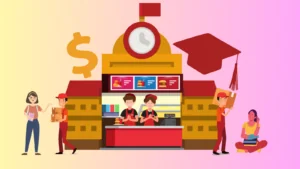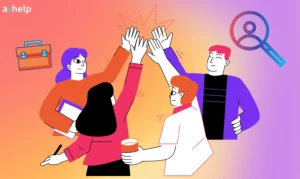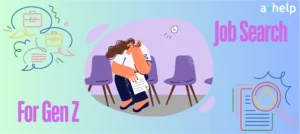According to RestofWorld, a significant proportion of the global labor force is now on the front lines of the AI revolution. Outsourced workers, freelancers, and contractors around the world, are the first to adopt and possibly the most vulnerable to the effects of generative AI technology.

✅ AI Essay Writer ✅ AI Detector ✅ Plagchecker ✅ Paraphraser
✅ Summarizer ✅ Citation Generator
Key Takeaways:
- AI technology, particularly generative AI, poses a new kind of competition for many creative workers, forcing them to adapt or risk losing work.
- Different industry workers, from artists to copywriters, have experienced a shift in their workload due to generative AI, resulting in an uncertainty around job stability.
- Despite the potential risks, some workers have embraced generative AI tools as a means to remain competitive and relevant in their fields.
The AI Disruption in Creative Jobs
Rafael Rodríguez Deustúa, a Mexico-based illustrator, expressed the following about the rise of AI-generated artworks in design competitions:
“Someone who doesn’t have that talent or [hasn’t] invested years of practice in getting the skills to just ‘win’ a contest with an illustration he or she didn’t really do — that bothers me”.
With different new tools artificial intelligence has become a contender in the realm of design, challenging the traditional work processes of creative professionals like Deustúa.
Offshore outsourced workers are directly dealing with the consequences of rising AI popularity. As generative AI tools present a new model for cost-cutting, these workers are under pressure to adapt.
This indicates that many offshore workers have already seen generative AI change the demand for their work and the stability of their income. Interestingly, not all workers see this as a threat; some have chosen to embrace the AI tools in a bid to stay ahead of the curve.
Freelancers: Early Adopters and Innovators
Several freelancers have embraced generative AI to enhance their work and expand their service offerings. Abisoye Otusanya-Azzan, a copywriter based in Lagos, Nigeria, has been utilizing ChatGPT, an AI tool, to assist with research and overcome writer’s block.
Similarly, illustrator Santiago Bautista González has supplemented his hand-drawn work with AI illustrations, maintaining his income levels despite the disruption. He states:
“Because of artificial intelligence, I started getting just too much work.”
Despite these successes, the shift towards AI is not without its concerns. Globally, 76% of respondents to RestofWorld’s survey predicted that generative AI would allow their company to cut costs, and 63% believed that this could result in hiring fewer external contractors.
But as Shweta Bose, a freelancer offering Adobe Photoshop services, points out:
“I think [generative AI] will create more opportunities for freelancers, but drive the price of certain services down.”
While freelancers and online gig workers are adapting to the AI tide, the traditional outsourcing industry is also experiencing AI’s effects. Despite the challenges, some outsourced workers, like Deustúa, are determined to hold their ground against the automation, betting on clients who value personal relationships and attention to detail.
Deustúa reflects:
“Seeing generative AI enter the market for illustrators is a bitter experience.”
His words encapsulate the mix of fear, uncertainty, and cautious optimism that defines the current global labor landscape in the face of AI’s relentless advance.
The Ethical Implications of Using AI in the Creative Process
The integration of AI in the creative realm also sparks the discussion on possible job displacement. Will AI replace creative professionals, or will it be a tool to enhance their abilities? As AI improves, the creative industries could undergo significant changes, potentially leading to job losses or shifts in roles and responsibilities.
This transition into an AI-driven creative process requires us to examine several key factors:
Skill Gaps and Reskilling: To maintain their relevance, creative professionals might need to acquire new skills in AI technology. However, the availability and accessibility of such training pose ethical concerns, as it might exacerbate existing inequalities.
Economic Impact: If AI takes over a significant portion of creative tasks, it could result in job losses. This raises the question of who bears the responsibility for the displaced workers and the associated economic consequences.
Cultural Impact: The widespread use of AI could lead to the homogenization of creative content, endangering cultural diversity. It’s crucial to consider how to preserve the rich diversity of human creative expressions in an increasingly AI-driven landscape.
Psychological Impact: The role of humans in the creative process is not just functional but also emotional. Creating and appreciating art provides emotional satisfaction, a sense of purpose, and a medium for self-expression. The shift to AI might deprive people of these psychological benefits.
These challenges underline the importance of carefully managing the transition to AI-driven creative processes and developing a framework that mitigates potential harm while leveraging the potential benefits of AI in creativity.
Follow us on Reddit for more insights and updates.





Comments (0)
Welcome to A*Help comments!
We’re all about debate and discussion at A*Help.
We value the diverse opinions of users, so you may find points of view that you don’t agree with. And that’s cool. However, there are certain things we’re not OK with: attempts to manipulate our data in any way, for example, or the posting of discriminative, offensive, hateful, or disparaging material.